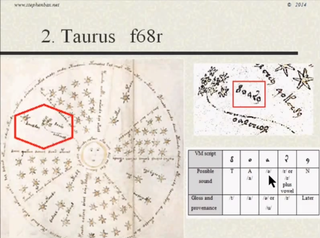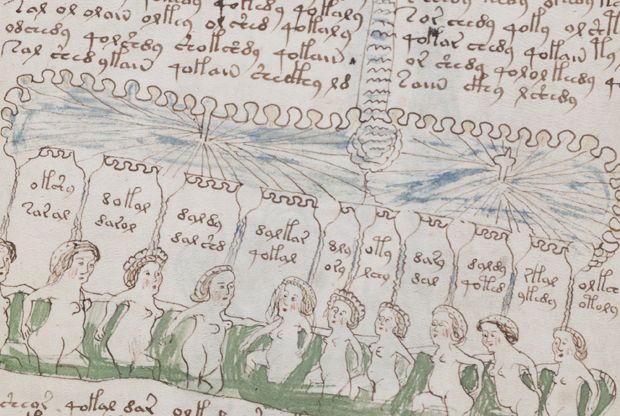

She spoke with Knowable about some of their insights.
#VOYNICH MANUSCRIPT PICTURES SOFTWARE#
Seeing the manuscript in person got Bowern thinking: Even though her main research focus is on documenting endangered Indigenous languages in Australia (where she’s from), perhaps some of the statistical methods, software and approaches that she and other linguists use to study and compare languages could be used to study the Voynich manuscript.īowern created and taught an undergraduate class to explore the possibilities, which she and post-doctoral researcher Luke Lindemann describe in a recent paper in the Annual Review of Linguistics.
#VOYNICH MANUSCRIPT PICTURES TV#
The mystery surrounding the Voynich manuscript has inspired novels, cameo appearances in popular TV shows and video games, and even a symphony - which debuted at Yale in 2017, along with an exhibit Bowern attended with a couple of her students. A “pharmaceutical” section depicts what may be herbal remedies - plant roots alongside medicine bottles - and a fifth section, unillustrated, has blocks of text demarcated with little stars. The section with the bathing nymphs is often called the balneological section, a reference to the science of baths and bathing. The astrological section includes zodiac charts and depictions of the sun and moon. The section on plants is the longest, making up just over half of the manuscript. It appears to have five main sections, she says. “It’s surprisingly small, a bit bigger than a paperback,” says Yale linguist Claire Bowern.

The manuscript now resides in the Beinecke Rare Book & Manuscript Library at Yale University. None of these claims has gained widespread acceptance. In 2018, a pair of researchers, citing the apparent similarity of some of the manuscript’s plant illustrations to the flora of Central America, claimed that the manuscript was produced by the ancient Aztecs. Others have variously claimed that the underlying language is Latin, or one of the Romance languages or Hebrew. Some scholars have argued that the text is gibberish, the document an elaborate hoax. The manuscript takes its name from Wilfrid Voynich, the Polish-born antiquarian who acquired and publicized it in the early 20th century. CREDIT: JAMES PROVOST (CC BY-ND) Linguist Claire Bowern


 0 kommentar(er)
0 kommentar(er)
